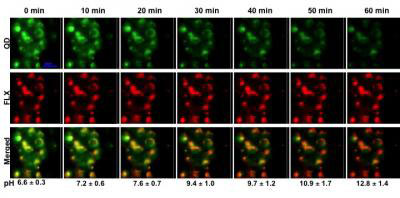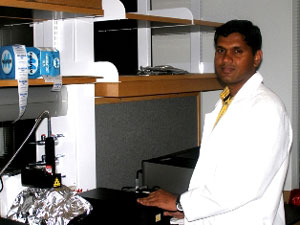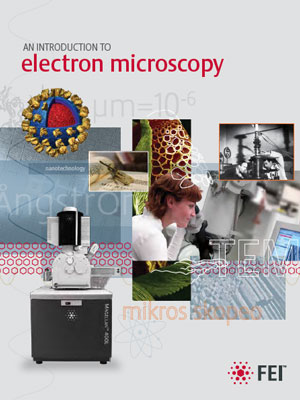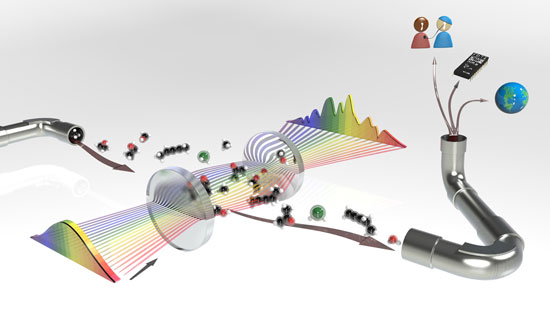The National Industrial Chemicals Notification and Assessment Scheme (NICNAS) is introducing new administrative processes for the notification and assessment of industrial nanomaterials that are considered to be New Chemicals under Part 3 (Notification and Assessment of Industrial Chemicals) of the Industrial Chemicals Notification and Assessment Act 1989 (the Act).
Oct 16th, 2010
Read more
 Scientists at the Naval Research Laboratory (NRL) in conjunction with the Scripps Research Institute in La Jolla, Ca., recently reported a detailed study of the interactions of water soluble semi-conductor quantum dots (QDs) with the electro-active neuro-transmitter dopamine. These biocompatible QD-dopamine nano-assemblies may be used as the active component for sensors that are used to detect a wide variety of target analytes ranging from sugars to peroxides.
Scientists at the Naval Research Laboratory (NRL) in conjunction with the Scripps Research Institute in La Jolla, Ca., recently reported a detailed study of the interactions of water soluble semi-conductor quantum dots (QDs) with the electro-active neuro-transmitter dopamine. These biocompatible QD-dopamine nano-assemblies may be used as the active component for sensors that are used to detect a wide variety of target analytes ranging from sugars to peroxides.
Oct 15th, 2010
Read more
Berkeley Labs materials scientist Yuegang Zhang and colleagues at University of California, Los Angeles are moving toward more efficient devices by studying the 'noise' in graphene nanoribbons.
Oct 15th, 2010
Read more
Extracting drinking water from the sea to prepare for a world parched by climate change, and re-imagining aeroplane and ship hull designs for the best fuel efficiency, are two of the visionary applications of a new GBP2.4 million research project announced today at the University of Strathclyde in Glasgow, Scotland.
Oct 15th, 2010
Read more
The funds will support the NU Center of Cancer Nanotechnology Excellence, a collaborative venture between NU's International Institute for Nanotechnology and the Chicago-based Robert H. Lurie Comprehensive Cancer Center.
Oct 15th, 2010
Read more
 Balaji Sitharaman, Ph.D., Assistant Professor of Biomedical Engineering at Stony Brook University, is a 2010 recipient of the National Institutes of Health (NIH) Director's New Innovator Award. Only a select group of early-career biomedical researchers nationwide receive this award, which includes a 5-year $1.5 million grant.
Balaji Sitharaman, Ph.D., Assistant Professor of Biomedical Engineering at Stony Brook University, is a 2010 recipient of the National Institutes of Health (NIH) Director's New Innovator Award. Only a select group of early-career biomedical researchers nationwide receive this award, which includes a 5-year $1.5 million grant.
Oct 15th, 2010
Read more
Die Deutsche Forschungsgemeinschaft (DFG) hat Dr. Sabine Wurmehl in ihr renommiertes Emmy-Noether-Programm zur Foerderung des wissenschaftlichen Nachwuchses aufgenommen. Der inhaltliche Schwerpunkt liegt in Materialien fuer die Spintronik.
Oct 15th, 2010
Read more
The FlexTech Alliance, focused on developing the supply chain for displays and flexible, printed electronics, today announced that it has awarded Corning Incorporated a grant to develop commercially viable methods for continuous printed electronic manufacturing on flexible glass substrates. The general substrate design and process methods identified will be applicable to a wide range of applications including sensors, energy harvesting and storage, displays, and solid state lighting.
Oct 15th, 2010
Read more
$127.5M state-of-the-art facility to include Computer Chip Commercialization Center that will further expand New York State's world-class nanotechnology initiative.
Oct 15th, 2010
Read more
 A versatile formula describes the energetic conditions needed to transport molecules laterally on surfaces.
A versatile formula describes the energetic conditions needed to transport molecules laterally on surfaces.
Oct 15th, 2010
Read more
National Science Foundation has renewed its grant to the Center for Nanotechnology in Society at Arizona State University for another five years.
Oct 14th, 2010
Read more
Physicists at UC Santa Barbara have succeeded in combining laser light with trapped electrons to detect and control the electrons' fragile quantum state without erasing it. This is an important step toward using quantum physics to expand computing power and to communicate over long distances without the possibility of eavesdropping.
Oct 14th, 2010
Read more
 Get a view into the world of nanotechnology through this all-new edition of FEI's 'An Introduction to Electron Microscopy'.
Get a view into the world of nanotechnology through this all-new edition of FEI's 'An Introduction to Electron Microscopy'.
Oct 14th, 2010
Read more
Moser Baer Technologies, Inc., the U.S. division of Moser Baer India, Ltd., Universal Display Corporation, and the College of Nanoscale Science and Engineering's Smart System Technology and Commercialization Center today announced a partnership to establish the world's first pilot production facility for Organic Light Emitting Diode lighting panels at STC's Canandaigua location.
Oct 14th, 2010
Read more
 Shell and the Massachusetts Institute of Technology (MIT) today signed an agreement to invest $25 million in the research and development of high value, sustainable technologies designed to drive innovation in energy delivery.
Shell and the Massachusetts Institute of Technology (MIT) today signed an agreement to invest $25 million in the research and development of high value, sustainable technologies designed to drive innovation in energy delivery.
Oct 14th, 2010
Read more
 Scientists at JILA and collaborators have demonstrated an improved laser-based 'molecular fingerprinting' technique that picks out traces of key hydrogen-containing and other molecules from a billion other particles in a gas in just 30 seconds or less - performance suitable for breathalyzers for diagnosing disease, measuring trace gases in the atmosphere, detecting security threats and other applications.
Scientists at JILA and collaborators have demonstrated an improved laser-based 'molecular fingerprinting' technique that picks out traces of key hydrogen-containing and other molecules from a billion other particles in a gas in just 30 seconds or less - performance suitable for breathalyzers for diagnosing disease, measuring trace gases in the atmosphere, detecting security threats and other applications.
Oct 14th, 2010
Read more







 Subscribe to our Nanotechnology News feed
Subscribe to our Nanotechnology News feed